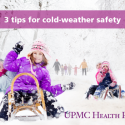Tanning Myths and Facts
Summer is fast approaching, and so is the sizzling debate about tanning. Among the topics: If tanning is bad, what’s the big deal over sun safety? How much sun is safe? And recently, is a base tan safe?
Here’s the truth about sun exposure and other common tanning myths.
Tanning Myths
Myth: If I get a base tan before vacation, it will protect me from getting sunburned.
Fact: The simple answer here is no, never! A base tan is not a safer way to tan, and it’s a common misconception because people believe that a tan can act as the body’s natural protection against sunburn. The truth is that a tan is the body’s natural reaction to prevent more skin damage, but the risk of skin cancer has already increased from exposure. It’s also important to note that a tan provides a sun protection factor (SPF) of only about a 3 or less, which provides very little protection against UV exposure.
Myth: I only need to wear sun protection if I will be outside on a sunny day.
Fact: The sun’s ultraviolet (UV) rays can damage the skin in as little as 15 minutes. If you’re going to be outdoors, you should wear sunscreen and have other protective measures in place as well. Even on a cloudy day and in the winter months, you can get sunburned.
Myth: I have darker skin tone and don’t burn, so I don’t need protection and can’t get melanoma.
Fact: Sun exposure of all levels can contribute to skin cancer in people of all colors, including African-Americans, Asians, and Hispanics. It is true that melanoma rates are higher in individuals with lighter skin, but some studies have shown higher death rates in individuals with darker skin.
The truth about skin cancer
Did you know?
- Skin cancer is the most commonly diagnosed cancer in the United States, with a nearly 5 million people treated annually and more than 9,000 deaths each year from melanoma alone.
- Every 54 minutes a person dies of melanoma.
- One in five Americans will develop skin cancer in their lifetime.
- More individuals develop skin cancer from tanning than develop lung cancer from smoking.
- Individuals who have used tanning beds 10 or more times throughout their lives are at a 34 percent increased risk of developing melanoma compared to those who have never used indoor tanning beds.
- Individuals who use an indoor tanning bed before the age of 35 increase the risk for melanoma by 75 percent.
How to protect yourself from the sun
Follow these recommendations from the American Academy of Dermatology:
- Generously apply a broad spectrum water-resistant sunscreen of 30 (SPF).
- Reapply sunscreen every two hours, even on cloudy days, and after sweating or swimming.
- Wear protective clothing. Examples include a wide-brimmed hat, long-sleeved shirt, pants, and sunglasses.
- Seek shade when possible.
- Avoid tanning beds.
- Avoid being outdoors in sunlight during the window where the sun’s rays are the strongest (between 10 a.m. and 4 p.m.).
- Check expiration dates on SPF and discard accordingly.
- Check your birthday suit annually (on your birthday) and report any changes in your skin to your dermatologist.
Sun exposure is the most preventable risk factor for skin cancer, including melanoma. Remember that when caught early, skin cancer is very treatable. For up-to-date information and sun safety tips, visit the Centers for Disease Control and Prevention or the American Academy of Dermatology.
References:
American Academy of Dermatology: https://www.aad.org/
Centers for Disease Control and Prevention: https://www.cdc.gov/cancer/skin/pdf/skincancerpreventionprogressreport_2016.pdf
Gershenwald JE, Guy Jr GP. Stemming the Rising Incidence of Melanoma: Calling Prevention to Action. J Natl Cancer Inst. 2015;108(1).
Holman DM, Berkowitz Z, Guy GP Jr, Hartman AM, Perna FM. The association between demographic and behavioral characteristics and sunburn among U.S. adults—National Health Interview Survey, 2010. Preventive Medicine 2014;63:6–12.
Rogers HW, Weinstock MA, Feldman SR, Coldiron BM. Incidence estimate of nonmelanoma skin cancer (keratinocyte carcinomas) in the US population, 2012. JAMA Dermatol 2015; 151(10):1081-1086.
Skin Cancer Foundation: http://www.skincancer.org/
The Environmental Working Group: http://www.ewg.org/
Wehner M, Chren M-M, Nameth D, et al. International prevalence of indoor tanning: a systematic review and meta-analysis. JAMA Dermatol 2014; 150(4):390-400.
Cancer Facts and Figures 2017. American Cancer Society. http://www.cancer.org/acs/groups/content/@editorial/documents/document/acspc-048738.pdf.




